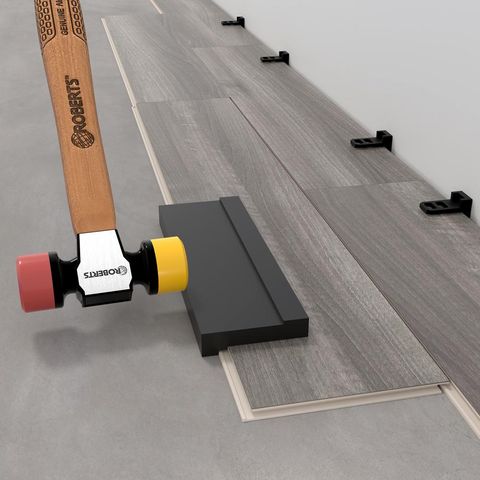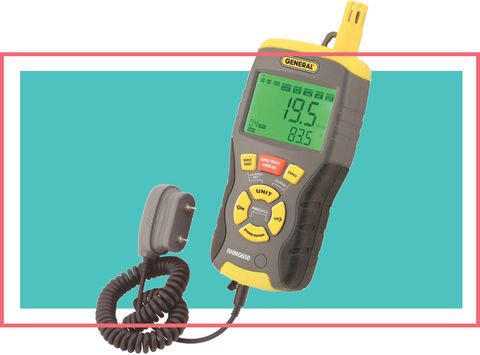The spectrum of tools needed for different flooring projects can undoubtedly seem intimidating at first (so many saws! so many applicators!) but using the right ones can be the difference between a finished project and a flop. You wouldn’t try to paint a watercolor masterpiece with a kitchen whisk or dig in the garden with measuring spoons, would you?
Fortunately, following a few guiding principles, as well as consulting with professionals like those at The Home Depot, will help ensure you have all the right instruments for the job.
Materials dictate the tools
Not surprisingly, the flooring material you’ve selected is the single biggest determining factor when it comes to what tools you’ll need to get the job done. (For example, the trowels necessary for installing tile have nothing in common with the pneumatic nailer you’ll need for hardwood.) The difficulty level of installation and the number of tools needed to complete the job properly should play into the decision-making process for anyone planning to DIY their own flooring installation or project. For example, renting a drum sander for refinishing your hardwood floors is only a worthwhile endeavor if you’re confident you can successfully one.
Should you rent vs. buy?
Tools can be a smart investment if you plan on future projects, but when it comes to flooring, how many do you need to actually take home with you forever? To ensure your budget doesn’t take a major hit, you should carefully weigh cost versus return on investment and frequency of use when considering whether to rent flooring tools or buy them. Joe Truini, general contractor and weekly host of Radio, advises homeowners to be honest with themselves about this kind of purchase.
“Some of the tools can be relatively affordable, but are you ever going to use them again?” he inquires. “How many floors is the average person going to install in their lifetime? It may make financial sense to add tools to your garage if you’re building a new house and want to install all of the floors yourself, but otherwise, it’s likely renting is the way to go.”
There’s a saw for that
Saws are integral to so many different types of flooring that you’re bound to use one during a DIY flooring installation. Even with the seriously easy-to-install floating floors like laminate, you still have to cut the boards precisely with a circular saw or jigsaw for where they meet the wall.
And when it comes to actual hardwood? Miter saws, jamb and undercut saws and table saws will become your close personal friends. Tile even takes its own type of saw, the wet saw. If you’re feeling uncertain about which will work best for your project and level of expertise, make sure to ask an expert for guidance.
Spring for an all-in-one installation kit
A useful new development in recent years has been the arrival of flooring toolkits, which package together many of the basic instruments needed to install flooring material properly. Most often made for the installation of luxury vinyl planks, laminate and engineered hardwood, these affordable kits provide items like expansion spacers, tapping blocks and pull bars into a single, ready-to-go bundle, taking the guesswork out of your tool-gathering process. (Bonus: all the items are reusable if you plan to tackle another flooring project.)
Take your room’s temperature
Contractors may use a moisture meter or hygrometer to take an accurate reading of the moisture levels in a home’s substrate and general environment, which can inform material decisions. (For more on waterproofing, visit letter W.) Once your materials have been delivered, it is important to store them in the space they’ll be used so they can adjust or expand to the present moisture level.
Yes, math skills are an essential tool
There’s no getting around that math is one of the most-used tools in flooring projects. A measuring tape, speed square, pencil and more are just a few of the instruments that you’ll need on hand in order to ensure proper installation. Don’t be afraid to use the backs of floor boards or even underlayment to do a bit of addition, and nobody said you couldn’t use a calculator.







